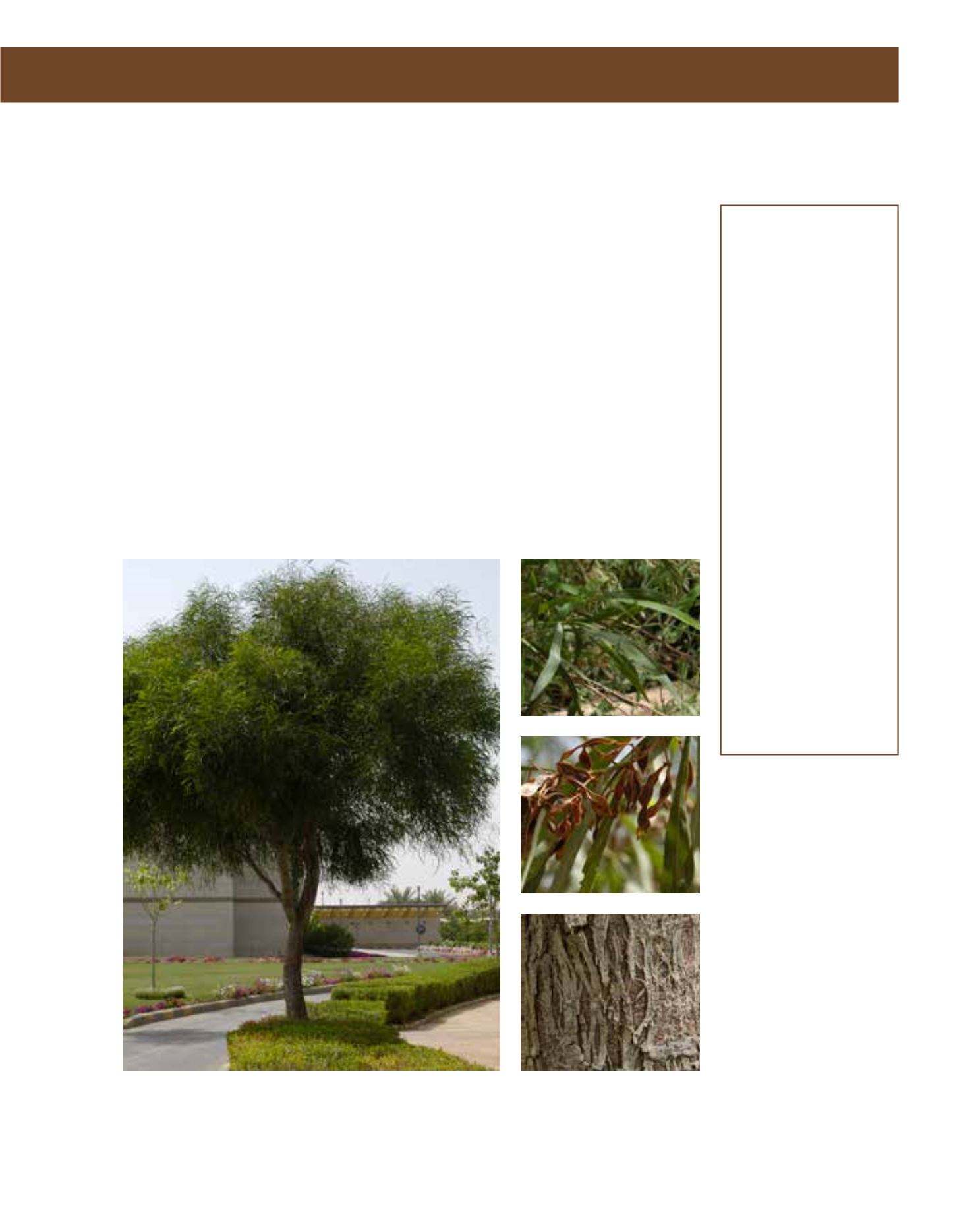

GENERAL
Origin
:
sub-tropical,
tropical
Vigour
:
fairly fast
growing
Humidity
:
extremely arid,
very arid
Propagation :
sowing and
pricking out
Maintenance :
low
CONDITIONS
Urban climate :
resistant
Dessication :
resistant
Stagnant water :
vulnerable
Irrigation
:
low
Salinity/ppm :
moderate (2500
ppm)
Hardiness
:
-3°C
SHAPE
Type
:
tree
Height
:
5 m-6 m
Spread
:
4 m-6 m
Foliage
:
evergreen
FLOWER
Colour
:
bright yellow
Size
:
1 cm
Period
:
February - April
Smell
:
scented,
pleasantly
vscented, flower
FRUIT
Type of fruit :
pod
Often referred to as Acacia cyanophylla, its synonym, and commonly known by various names
including Golden Wattle and Blue-Leafed Wattle, this tree is native to Australia. It may have
been introduced into Saudi Arabia as recently as the nineteen-sixties for use in wind breaks and
sand dune stabilization and was known first as cyanophylla, which describes its blue-green leaves.
Very vigorous when young, it also has the ability to fix nitrogen with its roots. In some countries,
however, it has become very invasive owing to the fact that its large quantities of seeds germinate
easily, and that it regenerates after cutting. A. saligna grows rapidly into a small, leafy, evergreen
tree with a rounded shape. It can be a multi-trunked specimen or have a single, short trunk. Its
graceful, arching branches and attractive, long leaves or phyllodes give it a weeping habit. Large,
bright-yellow, spherical flower heads appear in early spring and late winter, decorating the branch
tips. Its seeds are stored in the nests of ants. After the ants have eaten the seed stalks, the seeds
germinate. Moderately frost-tolerant and accepting most soils, it is a versatile tree that can be
used as an eye-catcher in a garden, for screening, dust and wind control or planting in wide road
medians. Apart from occasional pruning and good staking, it is easily maintained, although
heavy root suckering can be a problem and saplings must be removed at an early stage. It can be
used as a reserve of high-quality forage for use during drought, or as a mulch.
32
Acacia saligna,
Mimosaceae
Goldwreath Acacia,
Blue-leafed Wattle
















